Border Terrier: the Adventurous Companion who Goes Everywhere with You
Published: 2025. 04. 12 - Photos: Getty Images Hungary • 6 minutes reading

Published: 2025. 04. 12 - Photos: Getty Images Hungary • 6 minutes reading
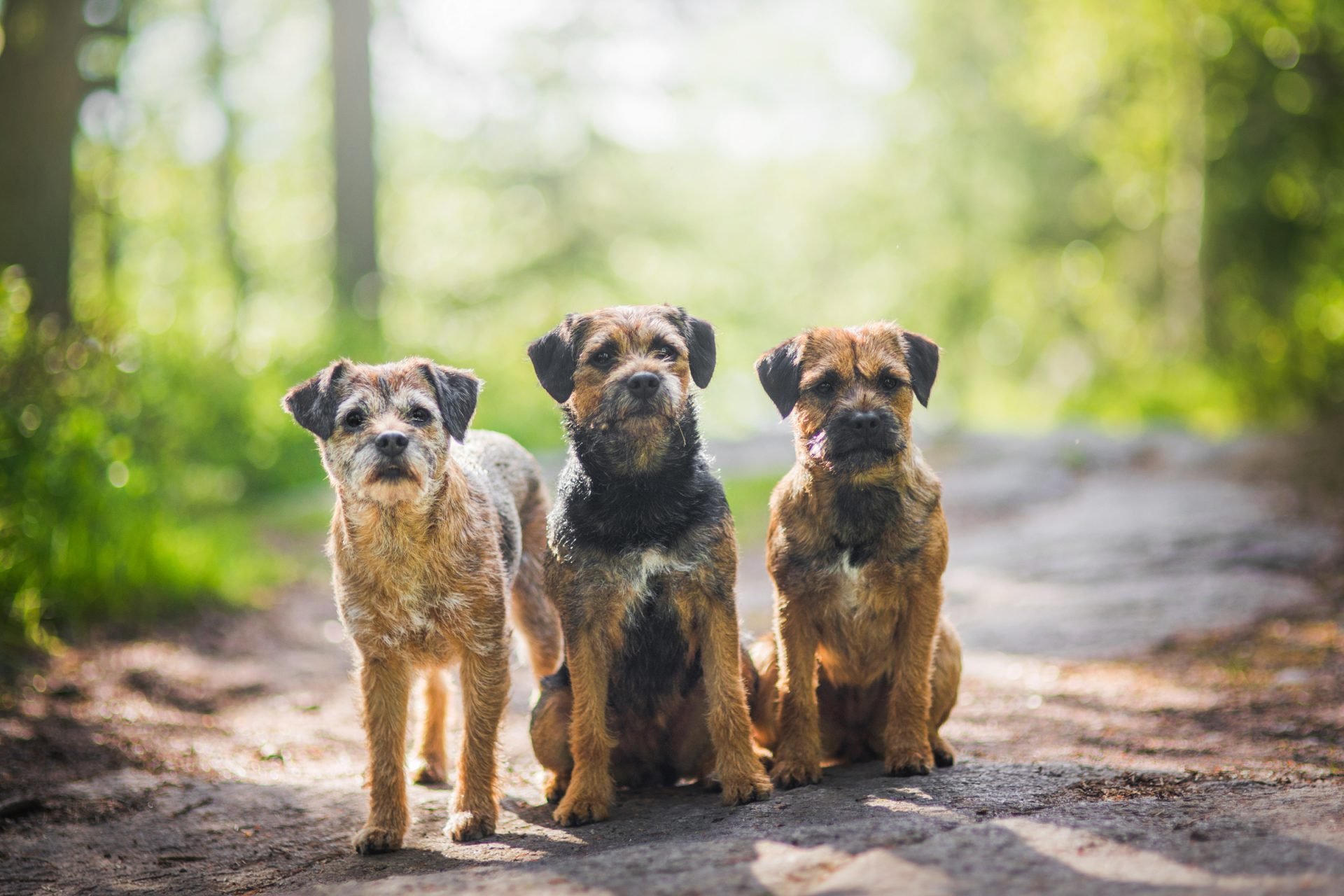
The Border Terrier is a hardy, energetic, brave and extremely tenacious dog who once kept up with the horses.
At first glance, many people think of a Border Terrier as a mixed breed puppy. Its average appearance is due to the fact that it was developed with an emphasis on internal qualities. It is also important that its coat blends in with its surroundings and can withstand the harsh weather of the countryside. A Border Terrier is not necessarily what you would immediately call a terrier. Its head is often compared to that of an otter and its appearance has changed little over the centuries. What is there to know about the smallest and most hardy of working terriers?
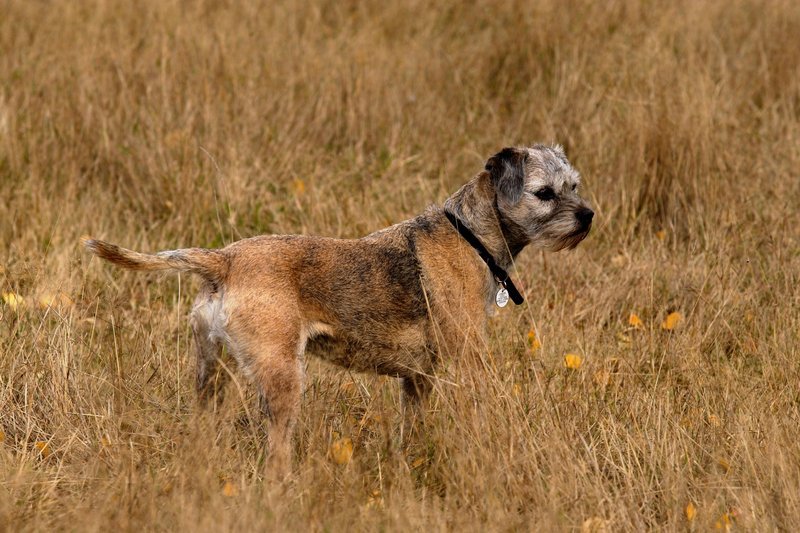 The Border Terrier's fur blends into the environment
The Border Terrier's fur blends into the environment
The name Border Terrier refers to the place where the word border originated. The hardy puppy was born on the border between Scotland and England. The exact date is disputed, some say it was in the 1700s, others in the 1800s. They used to be called redwater or Coquetdale terriers. According to the Border Terrier Club, the breed was created in the 1800s and was known by that name in most places by the end of the 19th century. It is thought to be one of the oldest terriers, and may share ancestry with the Bedlington and Dandie Dinmont Terriers. It was officially recognised in 1920, when the first breed club was formed.
It owes its appearance to its native habitat, where it has had to adapt to harsh weather. It was also important that his colour was not too conspicuous, so that he could easily blend in with his surroundings during his work. The Border Terrier was most often used to chase foxes or badgers out of the pits, and sometimes also worked with Greyhounds. Hunters on horseback had to be followed on their feet, making it a very tenacious and, for its size, highly mobile animal. Confronting foxes also required a lot of courage from him. It has also been known to hunt otters, so water is no problem for it. And thanks to its loose skin, it can easily get into the tightest holes to chase out the inhabitants.
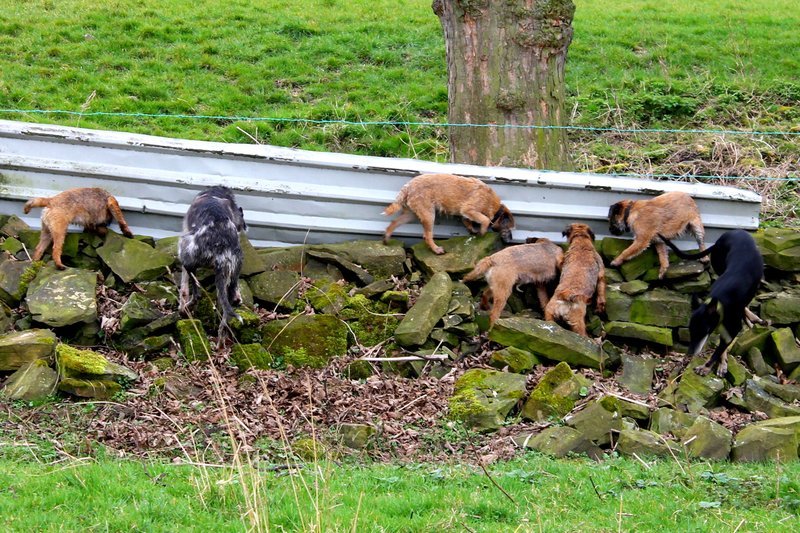 Working Border Terriers
Working Border Terriers
Almost every particle of the breed has been bred to do the job well. It has the distinction of having changed very little in appearance over the years, and fortunately it is not over-bred. Nowadays, it is becoming more and more popular as a family dog, as it is a very good-natured and loving companion.
A small working terrier can weigh between 5 and 7 kg. Height at withers is around 36 cm. The head is often described as otter-like, the skull is moderately broad and the muzzle is short and strong. The muzzle is usually black and the eyes are dark and bright-eyed. Ears drooping, small and V-shaped. Skin thick, neck moderately long, trunk deep and narrow. Forelimbs straight, paws small and thick. Tail set on high, thick and thinning at the base. The coat is coarse and dense with a thick undercoat. Colours may be red, wheaten, grey and tannish or blue and tan. Life expectancy is 14 years.
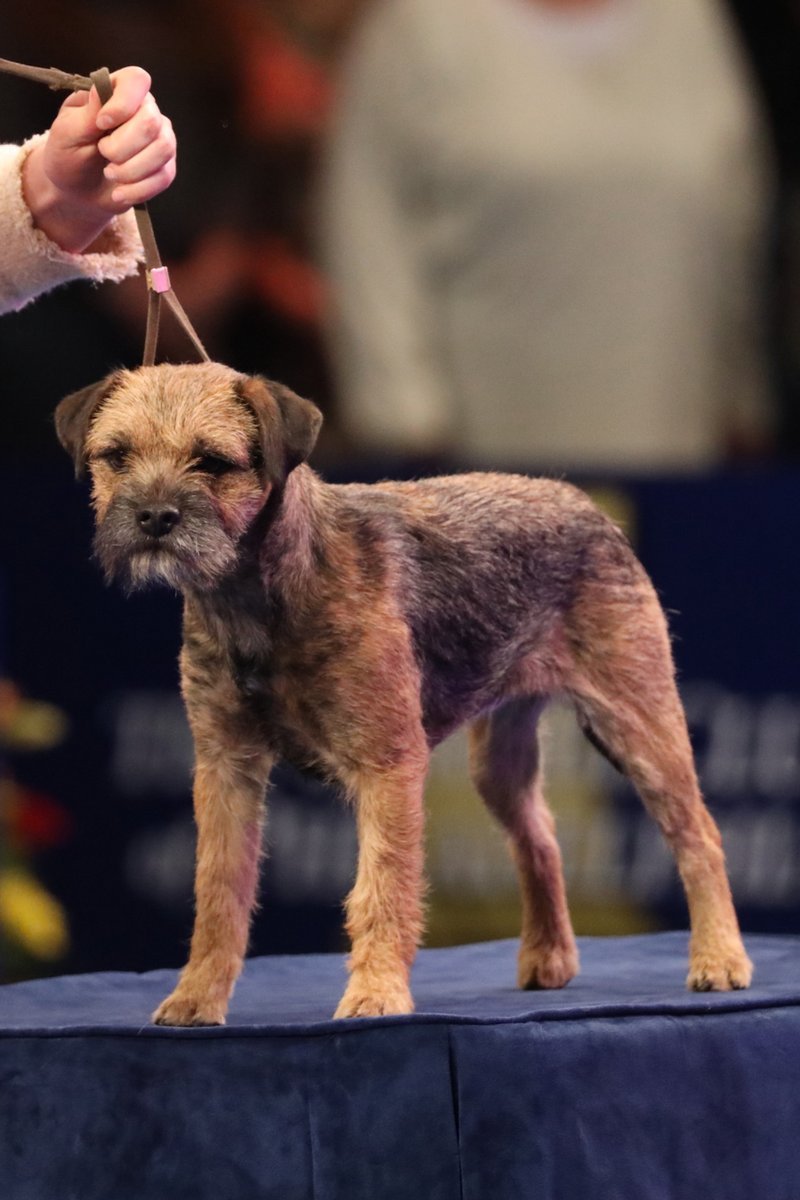 Border Terrier at a dog show
Border Terrier at a dog show
His old hunting instinct and his penchant for digging are still alive in him today. However, with consistent training, it can be weaned from what was once an ideal habit, but is now an undesirable one. He has the good quality of lacking the stubbornness of a terrier. As he has often worked in a pack, he generally gets on well with other dogs and is not aggressive towards others. He is an ideal family pet, but it should be remembered that he once kept up with horses: despite his small size, he requires a lot of exercise. He is a great signal dog, very curious and will bark to let his owner know he has found something interesting. He is a good companion with children, and his good temperament is much appreciated. He is also very friendly with strangers. He has a hard time with loneliness, as he is very attached to his owner. If regularly left alone for long periods, he may be prone to destructive behaviour.
Although his size does not suggest it, he is a very energetic and hardy dog, adventurous and very brave. He does not need to be pampered or sheltered from the wind, as his recklessness is almost enviable. Loyal, intelligent, curious and loving companion, he is an excellent partner for his owner throughout his life.
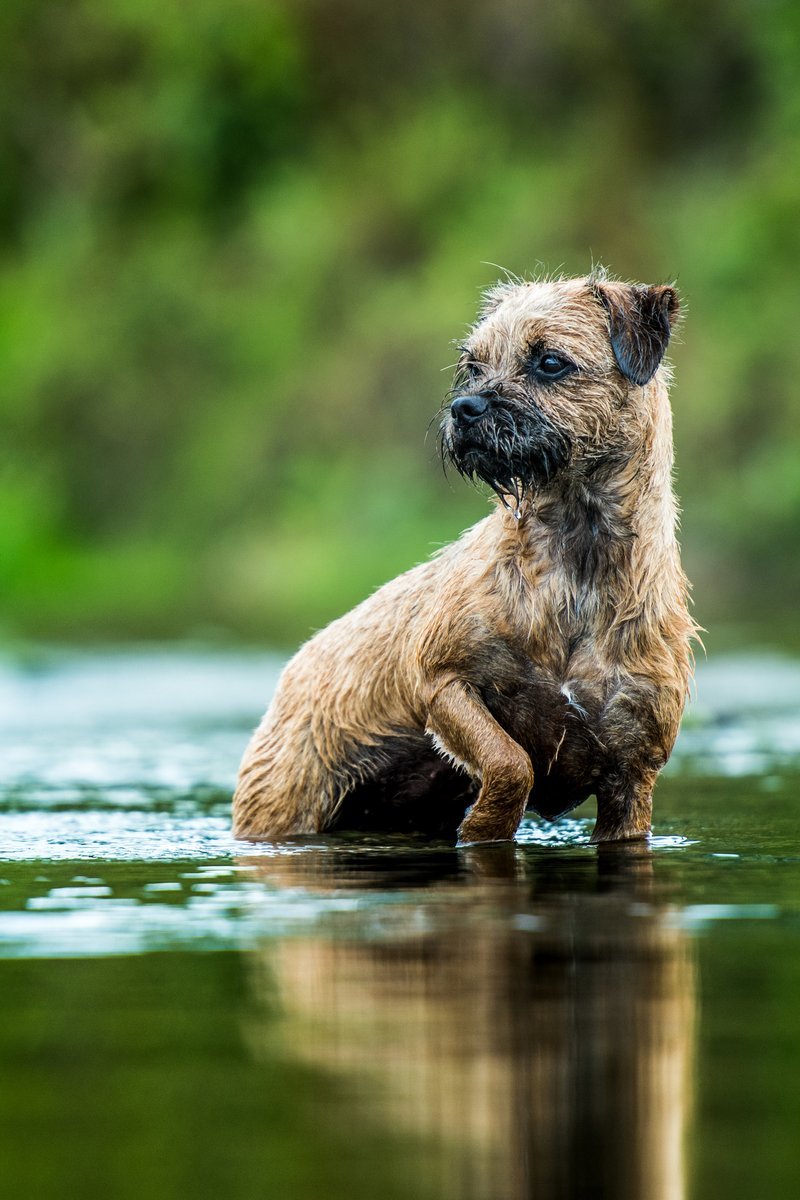 The Border Terrier likes the water
The Border Terrier likes the water
Well adapted to different lifestyles. However, care should be taken to ensure that it is allowed to move around when kept indoors. In a garden house, it may be prone to digging, especially if it receives little attention and is not mentally challenged enough. It is therefore worth exercising his mind regularly or trying different dog sports with him. It is important to have a fence around the house that is escape-proof, as his hunting instinct and desire to explore may lead him to try to track down potential prey. It is also prone to squeeze through small holes or even climb over a barrier. So it is important that he lives behind a secure, impenetrable fence, as he is a real escape artist. This is not because he doesn't have a loving, loyal companion, but because of his recklessness. Cats can be trained from a young age, otherwise they may chase him. He is an excellent companion for children and adults who like hiking and adventure. For him, resting on the sofa is not a satisfying activity. Although it can cope well with colder weather, it is not recommended to keep it in the yard as it is very demanding to be close to its owner.
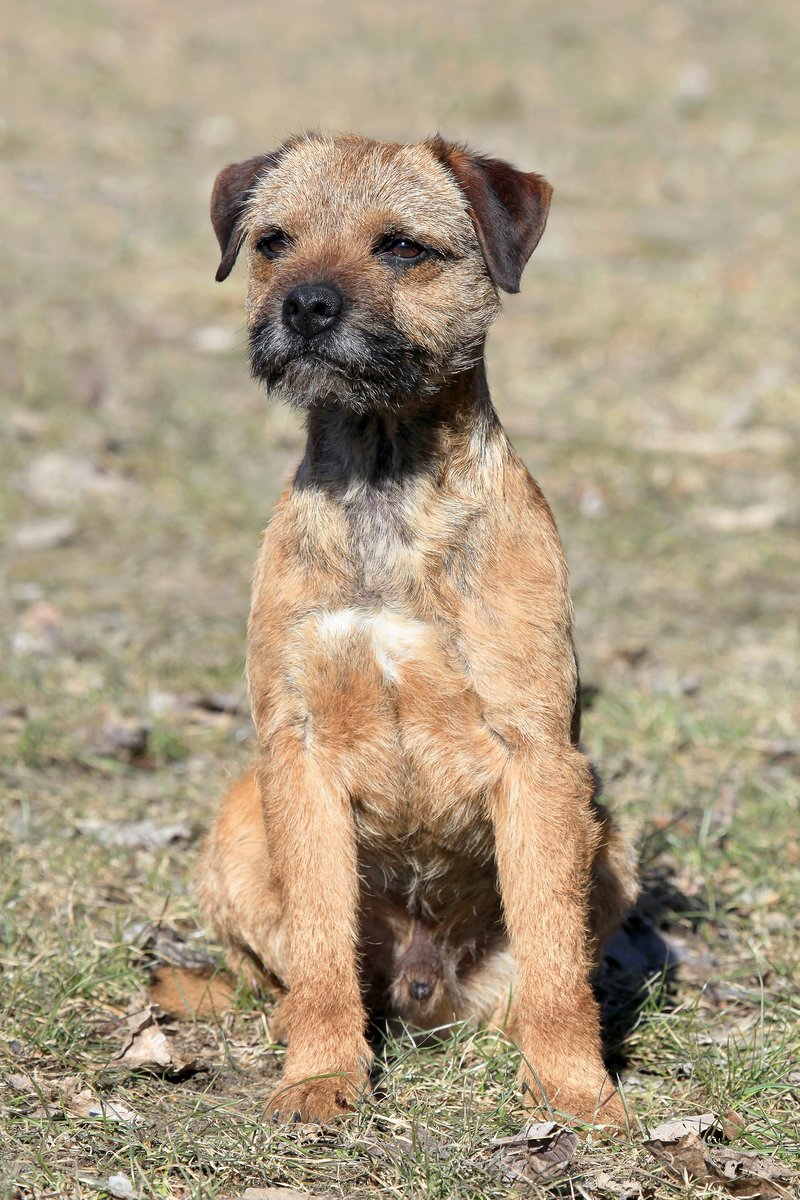 Border Terrier
Border Terrier
Despite their agility, border terriers can be prone to obesity. It is therefore important not to give him extra food unless it is included in his daily ration. His coat does not need much attention, it should be brushed occasionally and trimmed twice a year. Its coat almost sheds dirt, so it does not need frequent bathing. The claws need trimming if they get too long. The eyes and ears should be cleaned regularly. Border Terriers love to chew, so it is important to provide a durable toy that is safe for their teeth.
The Border Terrier is good at hiding any health problems. Sometimes only small changes in behaviour, such as becoming quieter, are signs of pain or illness. Fortunately, this is relatively rare, as they are a very healthy breed. However, he can sometimes suffer from patellofibroma, hip dysplasia, progressive retinal atrophy and Canine Epileptoid Cramping Syndrome (CECS), also known as Spike Syndrome, which is a common condition in border terriers and causes seizures.
Literature: Szinák János – Veress István: A világ kutyái I (Dogs of the World I.); David Alderton: Dogs; Dr. Sárkány Pál: Nemzetközi Kutya-enciklopédia (International Dogs Encyclopedia); Paul McGreevy: Dogs; Sarah Whitehead – Beverly Cuddy: Dogs; Joan Palmer: A Practical Guide to Selecting a Small Dog
Follow us!
facebook instagram youtube spotifyRelated articles
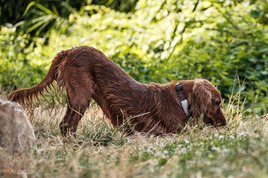
This Type of Slug Killer Can Be Deadly For Your Dog Too
Health • 2 minutes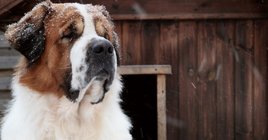
How to keep your dog safe outdoors during the cold winter
Care • 5 minutes
Is your dog's paw slipping too often on the floor? Here's what you can do to help
Care • 3 minutes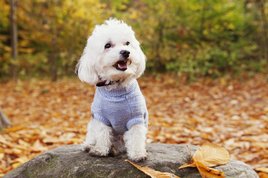
As the temperature drops, your dog's skin becomes more sensitive: how to care for it properly
Care • 3 minutes